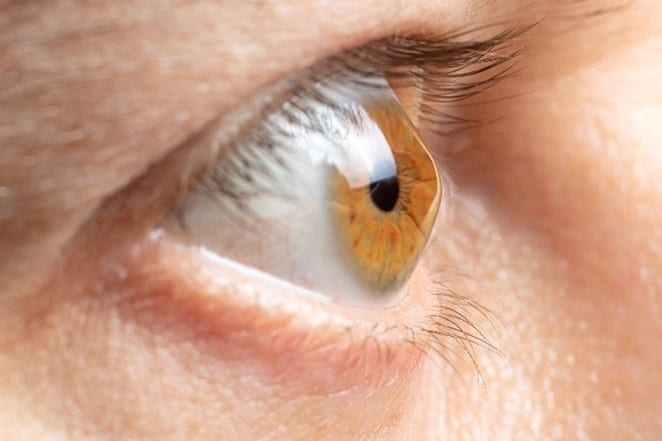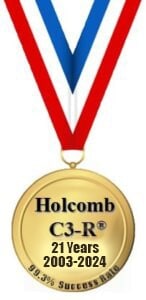 Keratoconus affects roughly one out of every 400 people. In decades and centuries past, people who developed this condition were often doomed to see their vision get progressively worse, unable to stop the gradual bulging of the cornea. Now, however, keratoconus is very treatable, particularly when caught early. I, Dr. Brian Boxer Wachler, am thrilled and honored to have played a significant role in developing successful treatments for keratoconus.
Keratoconus affects roughly one out of every 400 people. In decades and centuries past, people who developed this condition were often doomed to see their vision get progressively worse, unable to stop the gradual bulging of the cornea. Now, however, keratoconus is very treatable, particularly when caught early. I, Dr. Brian Boxer Wachler, am thrilled and honored to have played a significant role in developing successful treatments for keratoconus.
One of the best advancements for impeding keratoconus is corneal cross-linking. Holcomb C3-R® epi-on cross-linking is a non-invasive procedure that is highly effective at slowing and in many cases stopping the progression of keratoconus. Having specialized in the treatment of keratoconus throughout my career, I invented a procedure with a custom formula called Holcomb C3-R cross-linking (aka epi-on cross-linking) to optimize the results of this procedure, making it completely non-invasive and painless. As the inventor of epi-on crosslinking in 2003, 99.3% of my patients who undergo Holcomb C3-R cross-linking, keratoconus stabilizes with just one treatment.
Who Is a Candidate for Holcomb C3-R Cross-Linking?
Because Holcomb C3-R cross-linking is a highly effective, non-invasive procedure, almost all patients who have keratoconus qualify. During a consultation, I conduct an examination and review a few health factors to confirm that you are a good candidate for this treatment.
How Cross-Linking Works?
Cross-linking is an easy procedure to undergo. First, you will receive eyedrops to numb your eyes and keep them comfortable during the procedure. Next, while you recline in a chair, we administer riboflavin (vitamin B) drops into each eye affected by keratoconus. Then I shine a special UV light onto each eye for half an hour. The combination of these two steps helps to strengthen your cornea so that it does not bulge further.
Watch Dr. Brian’s webinar, How to Conquer Keratoconus
Get 3 Latest Best-Selling Keratoconus Books For Free!
(Plus a Complimentary Consultation – Value $307.00)
These books normally range from $15.99 to $22.95 each plus shipping



What Makes Holcomb C3-R Different from Other Cross-Linking

Many ophthalmologists perform corneal cross-linking by first scraping off the top layer of the cornea, the epithelium. My custom formula does not require the removal of the epithelium, allowing for a significantly easier procedure and recovery.
Holcomb C3-R cross-liking covers the greatest corneal area of any cross-linking and thus provides for a more thorough treatment. I also customize the amount of light energy used on each eye according to the needs and health of each patient. At just about every other eye practice in the world, doctors can only use a single energy setting when performing cross-linking.
I am the only doctor to offer Holcomb C3-R cross-linking because it is a proprietary procedure that I designed to help my patients. Steven Holcomb, an Olympic gold medal-winning bobsledder is the namesake of the procedure. In just half an hour, this procedure can halt the progression of keratoconus, give you peace of mind, and change your life.
Cross-Linking Recovery
Right when your procedure is completed, you may notice hazy vision but that’s gone by the next morning. Though you may be tempted to rub your eyes due to some lingering discomfort, avoid doing so, as that is not good for keratoconus.
And it’s always recommended to wear sunglasses outdoors to protect your eyes.
Learn More about Holcomb C3-R Cross-Linking from Dr. Brian
As one of the leading experts in keratoconus, I am happy to offer my patients options to help overcome this debilitating condition. My Holcomb C3-R cross-linking procedure is one of the best solutions around for preserving eyesight and stopping the progression of keratoconus. During a consultation, we can devise a complete treatment plan.
Please contact us today to Call 424-274-0958, text 424-245-0171 or email info@boxerwachler.com.
Frequently Asked Questions
How fast does keratoconus progress?
The progression of keratoconus varies between individuals. For some, it may advance rapidly, while for others, it remains stable for years. Early diagnosis and treatment are essential to prevent significant vision impairment.
 Can Holcomb C3-R be performed on both eyes the same day?
Can Holcomb C3-R be performed on both eyes the same day?
Yes, Holcomb C3-R can be performed on both eyes during the same session. This convenience minimizes downtime and allows you to return to your routine faster.
What are the early signs and symptoms of keratoconus?
Initial signs include blurry or distorted vision, increased light sensitivity, frequent changes in eyeglass prescriptions, and ghost images. These signs often emerge during adolescence or early adulthood.
Is there an age limit for undergoing Holcomb C3-R?
There is no strict age limit. The procedure is effective for a wide range of patients, including teenagers and older adults, depending on corneal health and the progression of keratoconus.
How is keratoconus diagnosed?
Keratoconus is diagnosed through eye exams that measure corneal shape, thickness, and overall eye health. Tools like corneal topography and slit-lamp evaluation are commonly used.
What follow-up care is required after Holcomb C3-R?
Post-procedure care includes only artificial tears (no medications as it’s NOT invasive) and follow-up visits with Dr. Brian. Most patients experience minimal discomfort and resume activities shortly after treatment.
Does keratoconus always require surgery?
No, surgery is usually not the first treatment option. Non-surgical treatments like Holcomb C3-R and specialty contact lenses often effectively manage the condition depending on the stage of keratoconus.
Can children develop keratoconus?
Yes, children can develop keratoconus. Regular eye exams are important, especially if there’s a family history of the condition or if your child frequently rubs their eyes or complains of poor vision.
Are there any risks or side effects associated with this procedure?
Holcomb C3-R is very safe. Minor side effects may include light sensitivity or mild irritation, but serious complications are rare due to its non-invasive nature.
What causes keratoconus to develop?
While the exact cause is reduced anti-oxidant enzymes in the cornea, genetic predisposition, environmental factors, eye rubbing, and certain medical conditions can contribute to its development.
How soon can I return to work or school after the procedure?
Patients can return to normal routines the very next day because it’s non-invasive. Dr. Brian will provide personalized guidance based on your recovery.
How is keratoconus different from astigmatism?
While both keratoconus and astigmatism affect how light enters your eye and can cause blurred or distorted vision, they are fundamentally different in nature and severity. Astigmatism is typically caused by a regular but uneven curvature of the cornea or lens, which leads to a stable and generally manageable refractive error. It’s often corrected with glasses, contact lenses, or refractive surgery.
Keratoconus, however, is a progressive eye disease where the cornea becomes increasingly thin and begins to bulge into a cone-like shape. This not only causes more severe visual distortion than typical astigmatism but can also worsen over time, potentially leading to significant vision loss if left untreated. Unlike stable astigmatism, keratoconus often requires specialized treatments such as Holcomb C3-R to halt its progression and preserve your vision.
Can keratoconus affect both eyes equally?
It often affects both eyes, but not always to the same extent. One eye may be more advanced, requiring different treatment strategies.
Is keratoconus hereditary or genetic?
Yes, there is a genetic component. If someone in your family has keratoconus, you should consider regular screenings for early detection.
How did Holcomb C3-R get its name?
It was named after Dr. Brian’s patient, Steven Holcomb, after he won an Olympic Gold medal as the driver for the U.S. bobsled team after Dr. Brian treated his keratoconus with C3-R and lens implants.
How long has this procedure existed?
Dr. Brian invented it in 2002 and is the inventor of epi-on cross-linking. That’s when he started the world’d first non-invasive epi-on crosslinking which has zero complications. Holcomb C3-R has a 99.3% stability rate (higher than all other types of cross-linking). Holcomb C3-R has the LONGEST track record for cross-linking in the United States – 22 years now!


